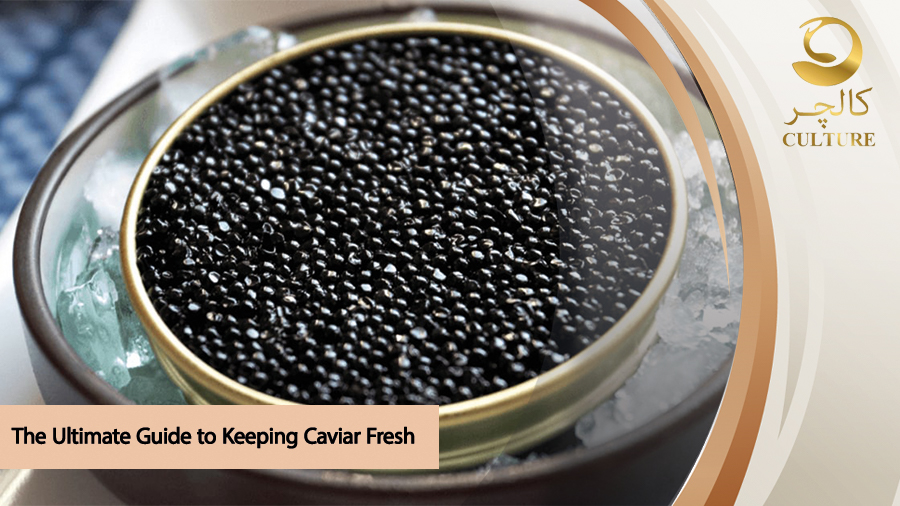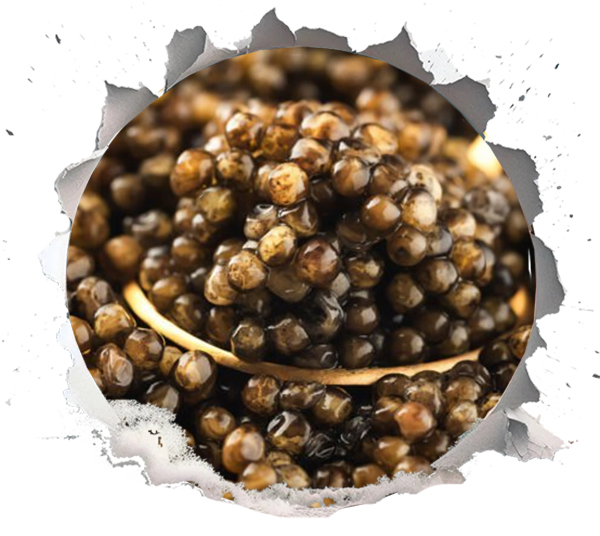The Ultimate Guide to Keeping Caviar Fresh: Tips and Techniques

Caviar has long been a hallmark of luxury and sophistication. Originating from the shimmering waters of the Caspian Sea, this delicacy, comprising salt-cured sturgeon eggs, boasts a unique flavour and texture that captivates food enthusiasts across the globe. Yet, its exquisite nature comes with a catch: caviar is notoriously delicate, demanding careful attention to preserve its freshness. In this comprehensive guide, we’ll unravel the secrets to keeping caviar fresh, equipping you with expert tips and techniques to ensure every spoonful remains as divine as the moment it was harvested.
Understanding Caviar: A Delicate Delicacy
Caviar is the salted roe of specific fish, predominantly sturgeon, revered for its rich taste and silky texture. The most celebrated varieties include:
- Beluga: Beluga caviar is known for its large, velvety eggs and a buttery finish, it’s the pinnacle of luxury.
- Ossetra: Offers a nutty profile with medium-sized, golden-hued eggs.
- Sevruga: Delivers smaller, intensely flavoured eggs with a subtle salty kick.
Why does keeping caviar fresh matter? Its high moisture content and fragile structure make it prone to spoilage. Exposure to air, light, or incorrect temperatures can swiftly diminish its quality, turning a gourmet treasure into a disappointment. Mastering its preservation is key to unlocking its full potential.
Storing Caviar: The Foundation of Freshness
Proper storage is the cornerstone of keeping caviar fresh. Here’s how to do it right:
Temperature Matters
Caviar thrives at a chilly 28°F to 32°F (-2°C to 0°C). Most household fridges hover around 4°C, which is too warm. To remedy this:
- Store caviar at the back of the bottom shelf, the coldest spot in your fridge.
- For precision, consider a small cooler with ice packs to maintain the ideal range.
Unopened vs. Opened Caviar
- Unopened: Sealed caviar can stay fresh for up to four weeks if stored correctly.
- Opened: Once the seal is broken, consume it within 48 hours to enjoy its peak flavour. Transfer leftovers to an airtight glass or plastic container to shield it from air and fridge odours.
Pro Tip: Avoid frequent temperature fluctuations; keep the tin steady and cool to preserve its pristine quality.
Serving Caviar: Elevate the Experience

Serving caviar isn’t just about taste; it’s an art form that enhances its freshness and allure. Follow these steps to impress your guests:
- Chill Your Tools: Refrigerate your serving dish or bowl for 30 minutes beforehand to keep the caviar cool.
- Mind the Utensils: Metal spoons can taint caviar’s delicate flavour. Opt for mother-of-pearl, bone, or plastic instead.
- Ice It Up: Nestle the caviar tin in a bed of crushed ice during service to maintain its temperature.
- Perfect Pairings: Complement caviar with blinis, toast points, or a dollop of crème fraîche. Steer clear of bold flavours that might overshadow its subtlety.
- Stunning Presentation: Serve it straight from the tin or in a chilled glass bowl, garnished with fresh herbs or a lemon wedge for a touch of elegance.
Extra Flourish
For a memorable occasion, serve caviar in small portions; think teaspoons; to preserve its chill and minimise waste. A caviar server or chilled dish can keep it fresh throughout your gathering, while a quick lesson for guests (e.g., “Savour it slowly on the palate”) adds a dash of sophistication.
Spotting Spoiled Caviar: Know the Signs
Even with the best care, caviar can spoil. Recognising the warning signs is crucial for keeping caviar fresh and safe:
- Smell: Fresh caviar exudes a gentle, oceanic aroma. A sour or overly fishy scent signals trouble.
- Texture: Look for firm, distinct eggs. Mushy or slimy roe is a no-go.
- Colour: Mould or odd discolouration means it’s past its prime.
- Liquid: A bit of moisture is normal, but excessive liquid hints at deterioration.
If you spot these red flags, discard the caviar promptly; consuming spoiled roe risks food poisoning and ruins the experience.
Pasteurized vs. Unpasteurized Caviar: What’s the Difference?
The pasteurization process involves lightly cooking the caviar to extend its shelf life. While pasteurized caviar may lack the same freshness and “pop” as unpasteurized varieties, it can be stored unopened for up to a year. Once opened, however, treat pasteurized caviar the same way as its unpasteurized counterpart and consume it within 48 hours.
Unpasteurized caviar offers a superior flavor and texture and should be consumed as quickly as possible after packaging. Keep it refrigerated and consume it within four weeks of purchase.
Preservatives in Caviar: What You Need to Know
Many caviar products contain preservatives to extend their shelf life and enhance flavor. Sodium tetraborate or borax is a common preservative used in caviar production. However, it can cause side effects, such as vomiting, nausea, shock, and kidney failure, and is banned in U.S. food products. Opt for caviar products that are preservative-free to ensure a safe and enjoyable experience.
Caviar Shelf Life: How Long Does It Last?
Caviar’s shelf life varies depending on factors such as storage techniques, preservative content, and packaging. Here’s a general guideline for how long caviar lasts under different storage conditions:
- Refrigerated (unopened): Four to six weeks
- Refrigerated (opened): 48 hours
- Room temperature: Two hours (one hour if the temperature is 90 degrees or above)
- Frozen (unopened): Up to one year
- Frozen (opened): Within a week
Common Mistakes to Avoid When Keeping Caviar Fresh

Even seasoned caviar lovers can slip up. Dodge these pitfalls to keep your caviar in top form:
- Room Temperature Blunders: Never leave caviar out for more than two hours; it’s a fast track to spoilage.
- Metal Mishaps: As noted, metallic utensils can alter its taste. Stick to non-reactive options.
- Overhandling: Less is more; limit contact to avoid contamination or warming the eggs.
- Date Neglect: Always check the sell-by date and plan consumption accordingly.
- Odour Overload: Store caviar away from pungent foods; it’s a sponge for unwanted smells.
Frequently Asked Questions
Here are some common questions and answers regarding caviar preservation:
Freezing is possible but not ideal for premium caviar like Beluga, Ossetra, or Sevruga. It can soften the eggs, dulling their texture. Cheaper varieties (e.g., bowfin) may fare better. If you must freeze, use an airtight container, consume within a year, and thaw slowly in the fridge for 24 hours.
Unopened caviar lasts up to four weeks in the fridge. Once opened, enjoy it within 48 hours. Pasteurized versions stretch to a year unopened, though they may lack the vibrancy of fresh caviar.
An off taste is a warning; don’t eat it. Spoiled caviar can cause illness. Toss it out and double-check your storage habits for next time.
Conclusion
Keeping caviar fresh blends science with a touch of artistry. By grasping its delicate nature and applying these expert tips; storing it at the perfect temperature, serving it with flair, and staying alert to spoilage; you’ll ensure every bite is a luxurious delight. Whether you’re a caviar aficionado or a curious newcomer, these techniques will elevate your enjoyment. Why not test them at your next soirée? Share your success (or your own caviar secrets) with fellow enthusiasts and savour the splendour of this timeless treat.
If you own a restaurant or hotel, we strongly recommend selecting a dependable supplier for caviar. At Culture Caviar, we provide the finest quality and impeccable packaging through our wholesale caviar service.

